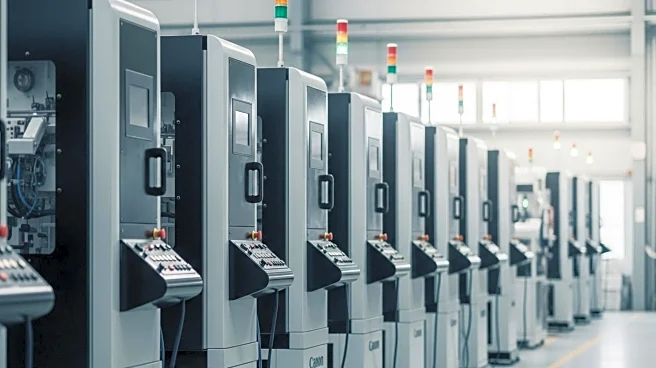What's Happening?
Hyundai Motor Company has revised its financial targets for the year, citing the impact of tariffs, while reaffirming its ambitious growth plans in the U.S. market. The company has lowered its operating profit margin forecast to between 6% and 7%, down from the previous 7% to 8%. Despite this adjustment, Hyundai aims to increase its annual sales to 5.55 million units by 2030, a significant rise from last year's 4.14 million units. The automaker is investing $26 billion from 2025 to 2028 to expand its U.S. operations, with plans to produce over 80% of its U.S. vehicle sales locally by 2030. This includes the development of a midsize pickup truck and a more rugged SUV.
Why It's Important?
Hyundai's strategic focus on the U.S. market underscores the country's role as a critical growth engine for the automaker. By increasing local production, Hyundai aims to mitigate the effects of tariffs and strengthen its competitive position in the U.S. automotive industry. This move could lead to job creation and economic growth in the regions where Hyundai operates. Additionally, the expansion aligns with broader industry trends towards local manufacturing and supply chain resilience, potentially influencing other automakers to adopt similar strategies.
What's Next?
Hyundai's plans to increase local production and introduce new vehicle models could prompt reactions from competitors and policymakers. The company's investment in the U.S. may lead to increased scrutiny of trade policies and their impact on the automotive industry. As Hyundai progresses with its expansion, stakeholders will be watching for potential shifts in market dynamics and consumer preferences.












